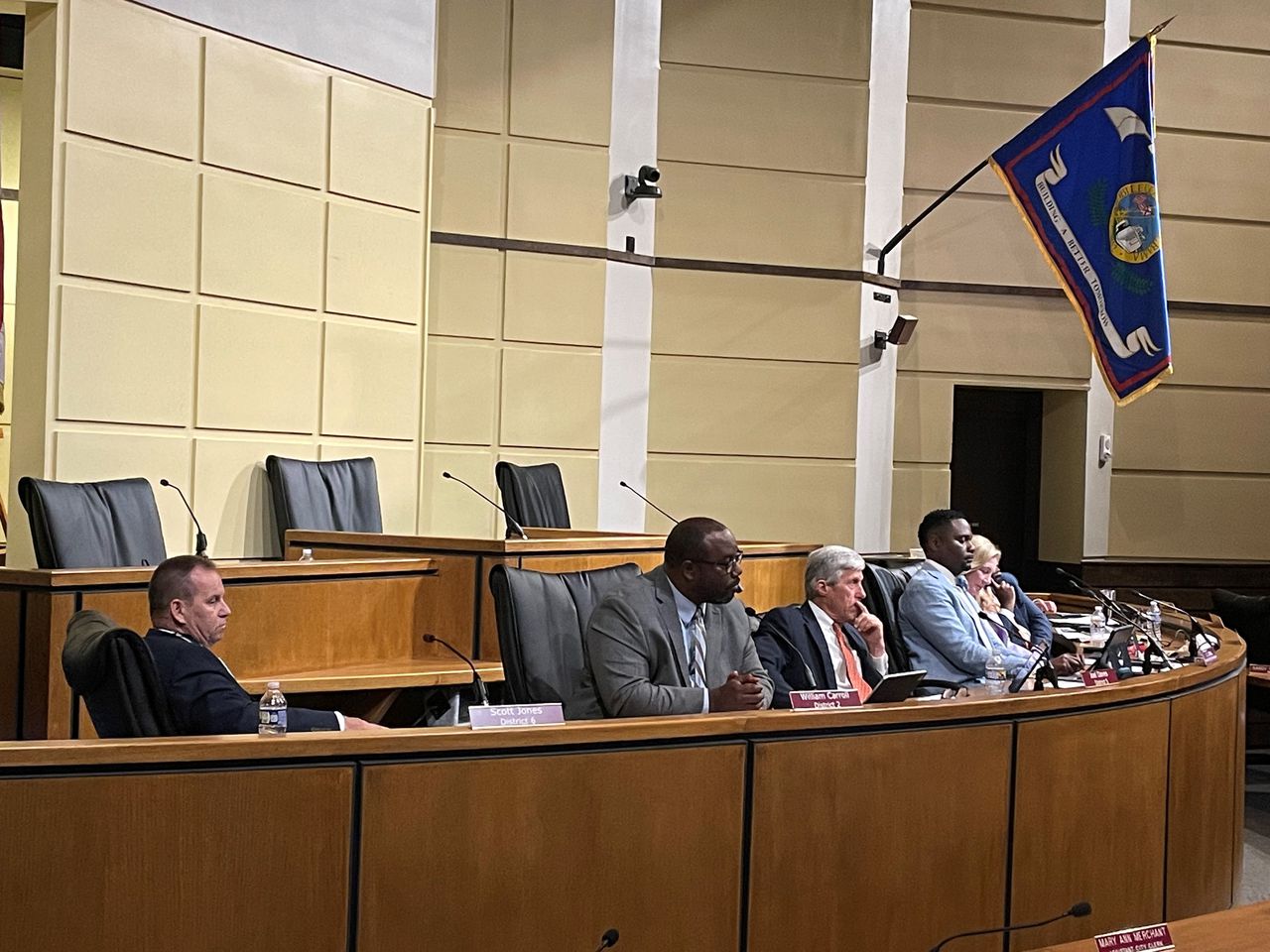New year, old headache: Mobile Council grapples with annexation process
The hot-button question of west Mobile annexation got off to a bumpy start in 2023 as the Mobile City Council considered the first related measure of the new year.
The agenda item in question would authorize a contract with PFM Group “for a third-party validation study regarding altering the corporate limits of the city of Mobile.” It received no discussion during the council’s Tuesday meeting; as is standard procedure for resolutions being introduced, it was held over for a week to give council members time to seek answers to any questions they might have.
Given the extensive discussion that took place during the council’s pre-meeting agenda review on Tuesday, there appear to be a few of those.
For $55,000, PFM Goup’s mission would be to “act as the third party validator and review the City’s processes, conclusions and underlying assumptions, determining their reasonableness and comparing the City of Mobile’s annexation process to national best practices.”
As explained by James Barber, chief of staff to Mayor Sandy Stimpson, it would provide a third-party validation of facts and figures used in the annexation discussion, such as the expected tax revenue from given areas.
District 6 Councilman Scott Jones raised the concern that doing the validation study without an agreed annexation map might set the stage for future problems. “What are we validating? I don’t think we have anything to validate yet,” he said. “… I haven’t heard any concurrence that we agree with what’s being validated.”
The wording also set off alarm bells for District 2′s William Carroll, who said he was concerned that specifying a footprint for the validation study was tantamount to specifying a map for annexation. The transparency of the process was a major issue, he said.
“You’re trying to validate something before we even can come to some type of agreement or consensus on what we’re trying to validate,” he said. “What we’re about to start doing is causing a lot of confusion to the whole entire community. … It makes sense to validate what we are 100% going to go after for this annexation project, not go validate some big umbrella and have to go back and change it.”
Jones said he felt that having demographic data validated by a third party “does give us the transparency you’re asking for.” “When it is on the table, we know that the information in front of us is right,” he said.
The overall mood of the council was hard to read. “I’m completely confused by this entire conversation,” said District 5 Councilman Joel Daves at one point. He said he had figured that the path forward was for the administration to put forth a plan with a definite map or areas to be annexed, and that those specific areas would then be subject to a validation study. District 7 Councilwoman Gina Gregory said it made sense to her to study the whole area that might be involved and then zero in on specifics.
Asked by Daves to lay out the steps he’d like to see, Carroll said he’d first like to see a clear map of areas to be annexed, then he’d like to see that map shared to everyone in the city. Then he’d like to see a validation study of that map. “I don’t want to go into this with the community feeling like they’re blind,” he said.
Barber said he thought the council was familiar with the area under discussion. “We’d be glad to release maps of the study area that we’re proposing to study. But this merely gives us a baseline of revenue and expenses, population, households … So it allows us to begin somewhere.”
Carroll said he’s concerned that if the process lacks transparency, council sessions will be flooded by citizens who feel they need to show up week after week to battle for their interests.
Annexation has the potential to alter the racial balance of the city’s voting population as a whole and within specific districts, making it a charged topic. But Mobile’s slowness to expand its boundaries westward as the population has sprawled in that direction has been a conspicuous factor in its lack of growth.
“I’m going to vote for some type of annexation,” said Carroll. “What it looks like, I don’t know yet.”
“We’re not submitting an annexation resolution,” said Barber. “We’re saying that here’s the area we want to study and we can begin from that process.”
Carroll said he didn’t expect to resolve the question in the precouncil meeting and looked forward to further discussion over the next week. Council President C.J. Small, one of the sponsors of the bill, encouraged Carroll, Barber and any other interested council members to talk it out.
“Sometimes, I really don’t understand, we make things harder than they’re supposed to be,” said District 1 Councilman Cory Penn, as the discussion ended. “We don’t have to have a tension between the council and administration. We can come together and get this done. We have done this throughout the past year.”
“If this can solve some of the problems in our city, let’s get it on the agenda,” Penn said. “Let’s talk about it, let’s let the community see what’s going on, let’s let the city see what’s going on, what is the proposed map, what is the revenue, then we go validate it, it’s a simple process. Why are we making this hard? It’s a simple process. Show the community, show the city, get feedback, validate the numbers, and let’s move on.”
Small said his hope was that the big issues about annexation need to be resolved before a plan comes up for a council vote. The council can hammer out answers to smaller questions, he said, but the potential deal-breakers need to be resolved early. That sentiment, at least, seemed to draw general agreement.
